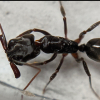What are some common materials that are toxic to ants?
The other day I was thinking about the soil vivarium and mold/bacteria prevention and realized that copper and its alloys are highly effective in that regard, while basically harmless to humans. However, I wasn't able to find if that's the case for ants. Would a brass/copper enclosure or just some parts of the habitat be harmful? Has anybody tested this?
I have a 3D printer and I've seen others use 3D printed stuff with their pets, however, those were the FDM printed elements (the filament type). I have resin printer, which is toxic (irritant) to humans when not cured, but supposedly not problematic after curing. Does anybody have experience with that?
What about some other common materials one might find around home and not consider toxic but it actually is? Anything comes to mind?


















